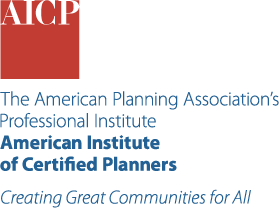April 24, 2025
Dustin White was floored when, about six years ago, he realized his home might have lead pipes. It hadn't crossed his mind until his wife asked if the tap water was safe for their baby's formula.
"It was shocking and almost embarrassing that I hadn't considered I have a lead line in my own home," says White, regulatory program manager at the Salt Lake City Department of Public Utilities (SLCDPU). "I have an old home, so that made it personal for me. After that, I thought, 'If I am a water quality professional and don't even think twice about it, how is the average customer going to [know]?'"
White and his wife were relieved to find their service line didn't have lead deposits, but their experience is a motivator for him, and he's shared this story many times while promoting the utility's lead service line replacement program.
This summer, SLCDPU will begin digging up lead service lines after years of planning and months of outreach. "We're really excited to get started — to offer these people some resources," White says.
Salt Lake City isn't the only community reassessing its lead pipes. As stories surfaced about the water crisis in Flint, Michigan, about a decade ago, the safety of these underground lines was called into question.
Last fall brought a federal mandate to replace those pipes and tagged funding to help. A lack of data, high costs, and the need to collaborate with private property owners make the task complicated. Now, shifting federal priorities could hamper efforts to get the lead out, but some municipalities are still pushing forward — and they are focusing their efforts on the most at-risk communities.

Giuliana Ramirez (left) and her sister, Gina, who grew up avoiding the city's drinking water, sit outside of their father's home in Chicago. Illinois has one of the highest concentrations of lead pipes in the U.S. Photo by Mustafa Hussain/The New York Times.
Uncovering root causes
Lead service lines, which deliver water from main lines to buildings, are most common in structures built before 1986, when the federal government halted their use. Since then, utilities have commonly used orthophosphate, a chemical that keeps lead from seeping into tap water. In Flint, the chemical wasn't used when the city switched its water supply from Detroit's system to the Flint River, causing dangerously high levels of toxic metal in the city's drinking water.
The exact number of lead service lines in the country are unknown, but the Environmental Protection Agency (EPA) estimates there are about nine million in total. The majority are probably located in six states: Illinois, Florida, New York, Ohio, Pennsylvania, and Texas. These lines also are more common in historically underserved communities, putting residents at higher risk for health concerns like kidney disease, reproductive problems, and child development issues.
In Jackson, Mississippi, where failing infrastructure has contributed to lead-contaminated water, about 26 percent of households live below the poverty line, according to U.S. Census data. "These social circumstances and these physical outcomes are inextricably linked, and we've failed to recognize that over time," says Marccus D. Hendricks, PhD, a planning professor at the University of Maryland. "And here we are with [many] communities of color or low-income communities [bearing] the brunt of the infrastructure crisis."
In October 2024, the EPA issued a final rule that municipal water systems must identify and replace lead service lines within 10 years. The future of the decision, however, is murky. A lawsuit challenging the rule was filed in January 2025, and House Republicans introduced legislation that could repeal it. Even without potential federal policy shifts, though, the situation is complex.
Pinpointing lead pipe locations
Records of lead service lines' locations are few and far between, creating a huge gap in data, and many communities don't have the resources to maintain underground infrastructure like pipes, Hendricks says.
Access to private property can complicate matters. While utilities typically own the service line between the main and curb stop or meter, customers own the portion on their property. This means utilities need owners' permission to find and replace lead service lines — or have to rely on residents to examine and report the lines.

Greater Cincinnati Water Works promotes its replacement program using a QR code that directs residents to a map to check the status of lead service line locations. Photo courtesy of Greater Cincinnati Water Works.
Rental properties pose another challenge. That has been the case for Greater Cincinnati Water Works (GCWW), which serves communities in southwest Ohio and a small part of northern Kentucky. "A lot of times, we can't get ahold of the landlord," says Jeff Swertfeger, water quality superintendent for GCWW. "If we can talk to somebody, we can convince them it's a good deal. We're doing it for free. It's going to increase the value of their home, decrease their risk for lead."
However, the biggest hurdle by far is funding, with replacement costs ranging from $1,200 to $12,300 per line. When utilities can't foot the bill for lines on private property, it often becomes the homeowner's or landlord's responsibility. "It is a huge burden," Hendricks says.
Putting under-resourced communities first
Since 2018, GCWW has replaced around 6,800 lead service lines in Cincinnati, but about 34,000 remain untouched. The utility's goal is to remove all lead lines by 2037, regardless of federal changes.
Before the crisis in Flint, issues about lead pipes "didn't really resonate with people," Swertfeger says. Media attention "gave us an opportunity to talk with [the public and the city council], and they'd listen," he says.
Initially, GCWW offered to pay for a fraction of private service line replacement costs, but had few takers among residents. A few years later, the utility started paying for the full cost, which water rate increases helped cover. Mandy Ackerman is among those residents who had a lead service line replaced through GCWW's program at no cost. "There was no disruption to my yard," she says in a video for GCWW promoting the program. "Cincinnati is host to a multitude of older beautiful homes, so you want to address those lead lines."
In 2021, GCWW turned to University of Cincinnati professors Christopher Auffrey, PhD, and Xinhao Wang, PhD, AICP, to create a program that targeted areas with more vulnerabilities. They — along with former students Max Linder and Xavier Yozwiak — developed a prioritization tool that puts underserved communities at the forefront of the replacement process.
"Now that we're at a point where technology allows us to address the equity considerations in a thoughtful way, we're obligated," Auffrey says. "As planners, we have a very strong sense of our responsibilities to the community."
The team used a mathematical strategy called analytical hierarchy process (AHP) that ranks alternative options based on their relative importance. After stakeholders compared 12 risk factors, two at a time, for elevated blood lead levels, each factor received a priority score, Auffrey explains. These scores, along with census block data, were then calculated to determine a final score for each block. The higher the census block scores, the sooner the lead service lines are recommended for replacement.
Risk factors were chosen using public health and census data, including whether residents have health insurance, the number of nearby childcare facilities, and access to healthy food — since "having a good diet has an impact on the absorption of lead," Auffrey says.
Using AHP "can make a big difference" in determining each factor's significance, Wang says. "Are they equally important? Are all of those exactly the same? This process allows you to differentiate among them in this context."
The tool's benefits could extend beyond lead pipe replacement, Swertfeger says. GCWW plans to use it for their general main water line replacement program, along with other efforts. "I think it's a great exercise to sit down and figure out what's important in your community," he says.
Lessons in outreach
To locate lead lines, SLCDPU uses a predictive model that looks at a home's age, pipe size, proximity to other lead lines, and where lines have already been replaced. They crafted a process to identify lead lines on private property, with an option for virtual inspections. They also reviewed more than 30,000 records by hand for references to lead lines, says White.
The scale of the project was so large that White says he would often rely on public utilities employees who had been injured in the field and essentially assigned to desk duty. "I would say, 'I'm so sorry you're hurt, but it looks like your hands are working, so, if you could go through all these papers and if you see anything that says lead, let us know,'" he says.
While replacement is free for residents, outreach — and choosing the tone of their messaging — was difficult at first. "It's just a really nuanced message," White says. "You want it to be serious enough that people respond, but you don't want to cause an overreaction."
The utility prioritizes consistent communication about the program, from letters and door hangers in several languages to phone calls. "It's not like, 'I'm just going to send you a letter and be done with you,'" says Teresa Gray, water quality and treatment administrator. "We are really trying to reach out."
SLCDPU has verified around 130 lead service lines so far, and the model predicts there are about 1,200 total. When construction begins in a few months, "all this work we've been doing — sampling, predictive modeling — it'll be really nice to validate some of those assumptions that we've made," White says.
Throughout the process, Salt Lake City has shared information — as well as successes and challenges — about its replacement project with other cities, including Cincinnati. "We're asking: 'What are you dealing with? What can we expect? What lessons do you have that we can learn?'" says Gray. "We're obligated to be able to provide that same information to anyone else."
Meanwhile, Hendricks, the University of Maryland planning professor, hopes that planners become more involved with infrastructure projects with social factors that are influencing physical risks. "I think that's the critical role that planners play: bringing this comprehensive, critical thinking to address infrastructure issues and beyond," he says.






